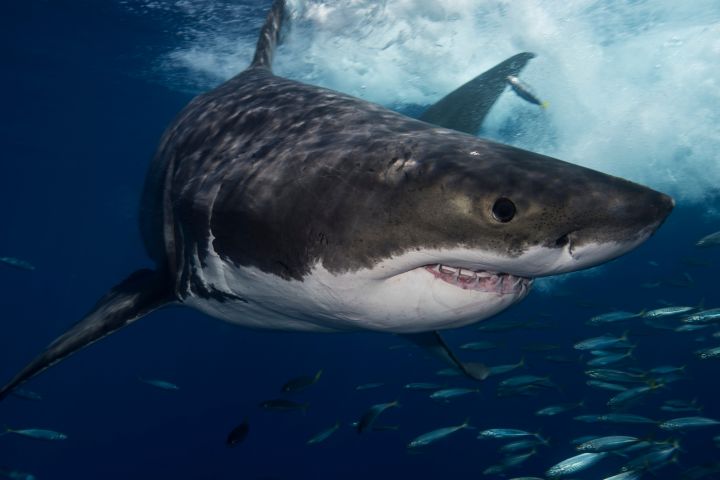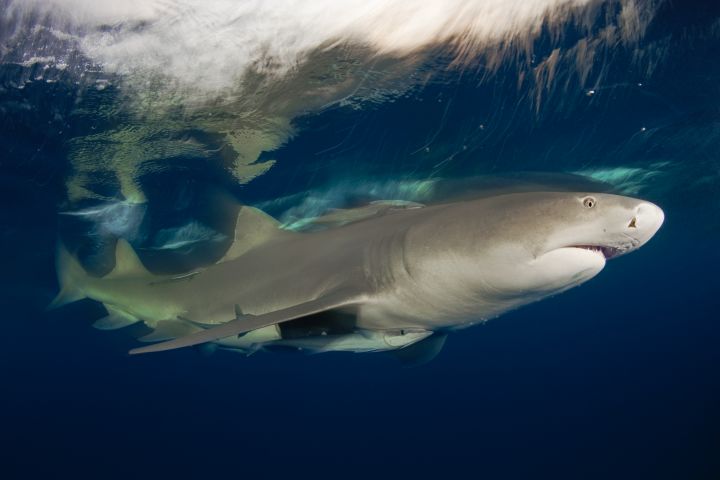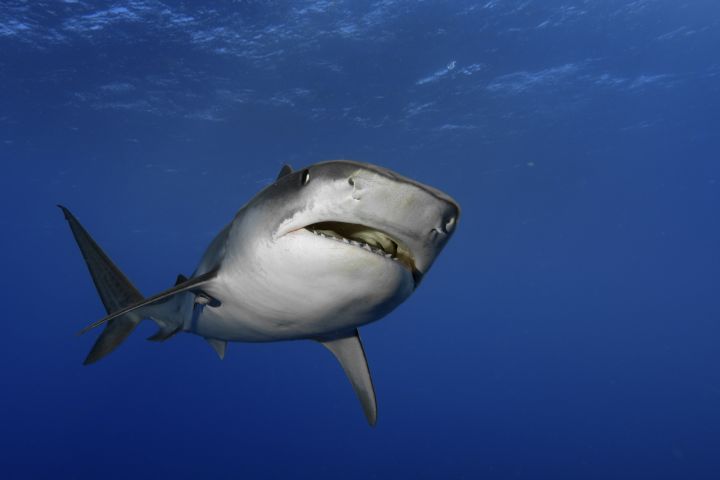IDEA SET
IDEA SET
Shark Teeth
Shark Teeth
Students explore shark diversity by matching drawings of shark teeth to drawings of the sharks themselves.
Grades
3 - 5
Subjects
Biology, Oceanography
This resource is also available in Spanish.
Sharks are among the most ancient species on Earth. Today there are more than 350 different species. Nearly all sharks are meat-eaters and eat a variety of fish and other sea creatures. A shark’s eating habits determine the shape and size of its teeth.
Extending the Learning
Have students debate the proposition: Sharks should be protected. Assign students roles such as scientist, environmentalist, doctor, restaurateur, fisherman, and beachgoer. Have students research the issue looking for information that supports their positions. Ask them to prepare their arguments and then debate the issue.

Directions
1. Build background.
Ask students to brainstorm a list of stereotypes about people’s perceptions of sharks. Write them on the board. Show students the photos of different types of sharks. Then discuss the different kinds of foods that sharks eat, such as turtles, fish, and microscopic organisms. Ask students to describe how sharks’ anatomy fits the prey they hunt.
2. Watch the video segments.
Watch the Crittercam video segments on the white shark and tiger shark. Ask students to notice the different kinds of foods the two sharks eat.
3. Distribute the worksheet.
Give each student a copy of the worksheet Sharks: Which Tooth Belongs to Which Shark? Have students look carefully at the drawings of four kinds of shark teeth and four drawings of sharks accompanied by the foods they eat. Ask students to examine the teeth for features that help capture and eat a particular kind of food, and then match each tooth to a shark and its food.
4. Review the answers.
Discuss the answers. (Tiger Shark, B; Lemon Shark, C; Great White Shark, A; Whale Shark, D) Ask: What tools can you compare each tooth to? For example, tooth A resembles a saw. Tooth C resembles a spear. Have students brainstorm other tools the teeth remind them of.

Objectives
Learning Objectives
Students will:
- describe the different kinds of foods that sharks eat
- identify how the features of shark teeth help sharks capture and eat particular kinds of food
Teaching Approach
- Learning-for-use
Teaching Methods
- Discussions
- Hands-on learning
- Visual instruction
Skills Summary
This activity targets the following skills:
- Critical Thinking Skills
- Analyzing
- Understanding
Connections to National Standards, Principles, and Practices
National Science Education Standards
- (K-4) Standard C-1: The characteristics of organisms

Preparation
What You’ll Need
Materials You Provide
- Pencils
- Pens
Required Technology
- Internet Access: Required
- Tech Setup: 1 computer per classroom, Projector, Speakers
- Plug-Ins: Flash
Physical Space
- Classroom
Grouping
- Large-group instruction
Media Credits
The audio, illustrations, photos, and videos are credited beneath the media asset, except for promotional images, which generally link to another page that contains the media credit. The Rights Holder for media is the person or group credited.
Researcher
Writer
Editors
Educator Reviewer
National Geographic Program
other
Special thanks to the National Geographic Museum
Last Updated
March 8, 2024
For information on user permissions, please read our Terms of Service. If you have questions about how to cite anything on our website in your project or classroom presentation, please contact your teacher. They will best know the preferred format. When you reach out to them, you will need the page title, URL, and the date you accessed the resource.
Media
If a media asset is downloadable, a download button appears in the corner of the media viewer. If no button appears, you cannot download or save the media.
Text
Text on this page is printable and can be used according to our Terms of Service.
Interactives
Any interactives on this page can only be played while you are visiting our website. You cannot download interactives.

